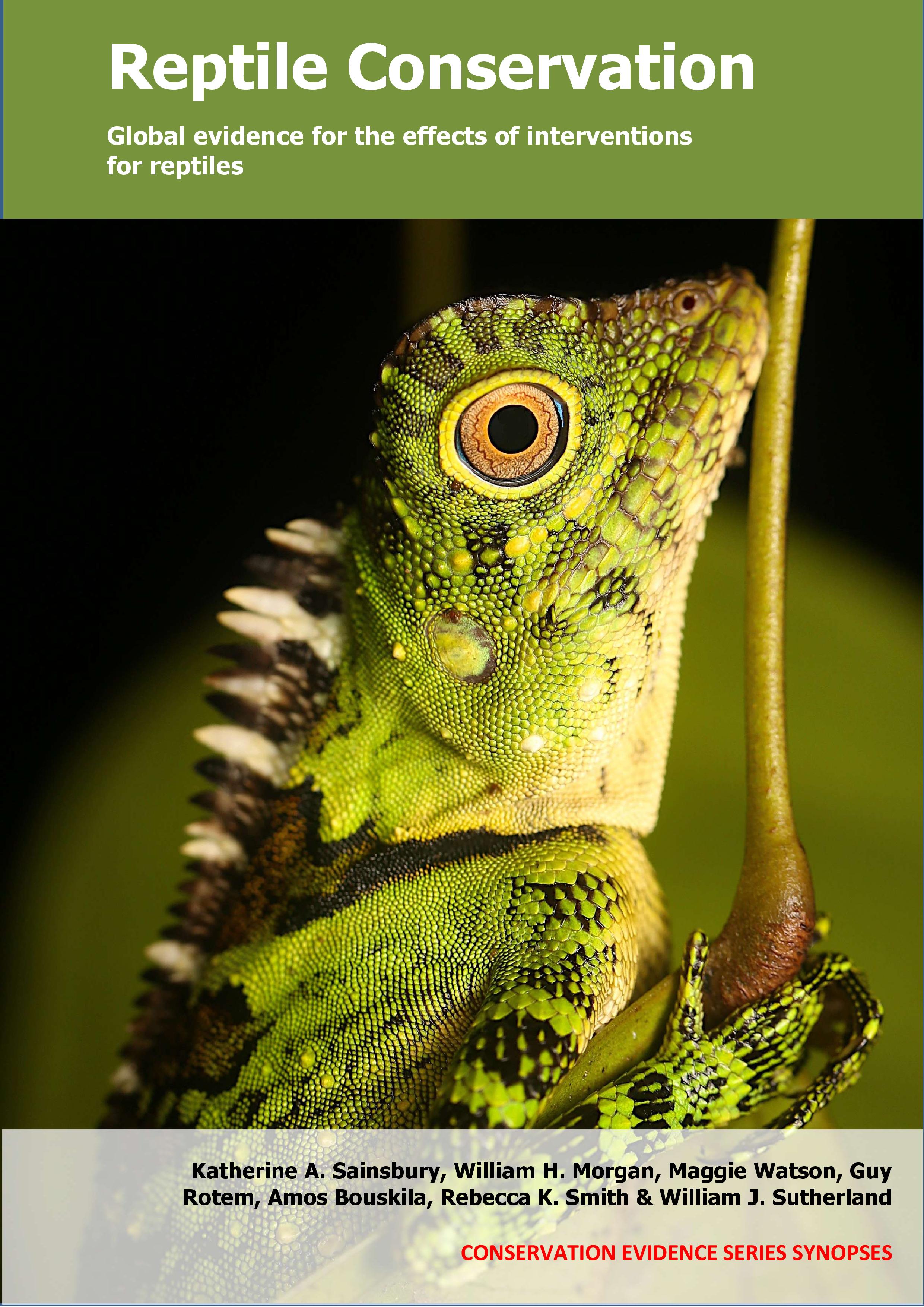Use holding pens or enclosures at release site prior to release of captive-bred reptiles
-
Overall effectiveness category Awaiting assessment
-
Number of studies: 2
View assessment score
Hide assessment score
How is the evidence assessed?
-
Effectiveness
not assessed -
Certainty
not assessed -
Harms
not assessed
Study locations
Supporting evidence from individual studies
A controlled study in 2010–2011 in a grassland site in Illinois, USA (Sacerdote‐Velat et al. 2014) found that captive-bred smooth green snakes Opheodrys vernalis released into holding pens before release (‘soft release’) had a similar chance of recapture as those released directly, and moved less than wild residents. Soft-released snakes were recaptured a similar number of times (13 recaptures/snakes) compared to hard-released snakes (6 recaptures/snake) over 3–5 months following release. Soft-released snakes moved less than residents (soft-released: 2 m/day; residents: 5 m/day), but movement of hard-released snakes (2 m/day) was similar to both soft-released and resident snakes. Eighteen captive-bred and reared snakes (≥9 g) were released in 2011 via soft-release (9 snakes; released in to 1.2 x 1.2 x 1.2 enclosure, held for 3 weeks before final release) or hard-release (9 snakes, released directly). Monitoring was completed by radiotracking and checking under coverboards on the ground at least 5 days/week for the first week, then 3 times/week for 3–5 months. Snake growth was also monitored, but only in captivity.
Study and other actions testedA replicated, controlled study in 2005–2008 in desert scrubland in California, USA (Nagy et al. 2015) found that first-year survival rates of head-started released juvenile desert tortoises Gopherus agassizii were similar regardless of whether holding pens were used and that overall one third of head-starters survived at least three years in the wild. First-year survivorship of tortoises initially released into holding enclosures was similar (9 of 12, 75% tortoises survived) compared to those that were direct-released into the same sites (12 of 15, 80% tortoises survived). Overall survivorship of released head-started juvenile desert tortoises was 32% over three years (17 of 53 tortoises survived). In the first year after release, 42 of 53 (81%) tortoises survived, in the second year after release 32 of 42 (76%) tortoises survived and in the third year after release 17 of 32 (53%) tortoises survived. Survivorship also was similar between tortoises released in the autumn compared to the spring (see original paper for details). In autumn 2005, twelve head-started tortoises were initially placed in temporary predator-proof enclosures in three sites (4 tortoises/site), 15 head-started tortoises were direct-released in the same three sites (5/site), and a further 16 head-started tortoises were direct-released in a fourth site. In spring and autumn 2006, ten further head-started tortoises were released into the fourth site. Tortoises housed in predator-proof enclosures (each 45 m2) were enclosed from September 2005–January 2006. All tortoises were radio-tracked weekly-biweekly during active seasons and monthly during inactive seasons from release until autumn 2008 (up to three years). Tortoises were recaptured twice/year while radio tracked for a health check.
Study and other actions tested
Where has this evidence come from?
List of journals searched by synopsis
All the journals searched for all synopses
This Action forms part of the Action Synopsis:
Reptile Conservation
Reptile Conservation - Published 2021
Reptile synopsis





)_2023.JPG)














